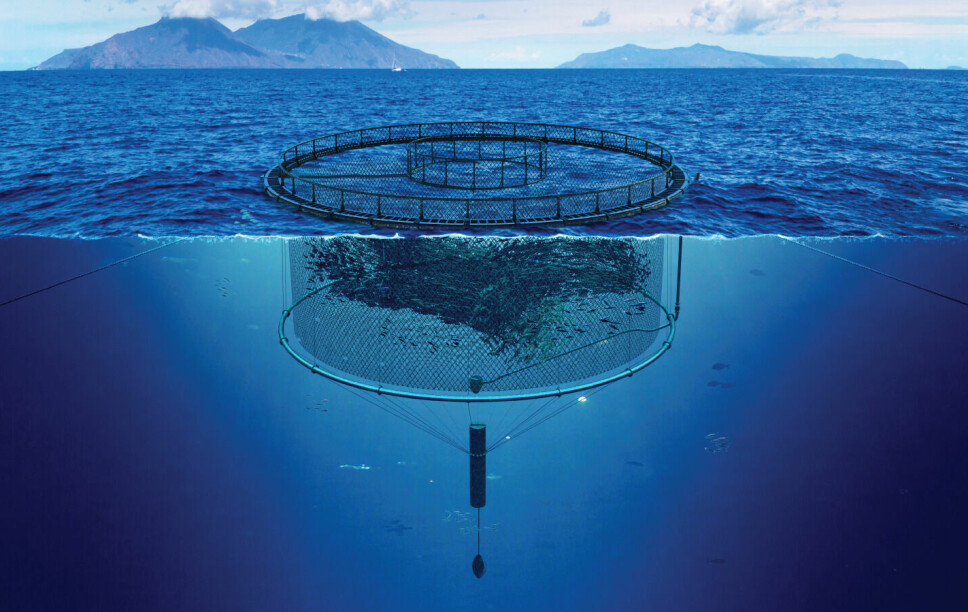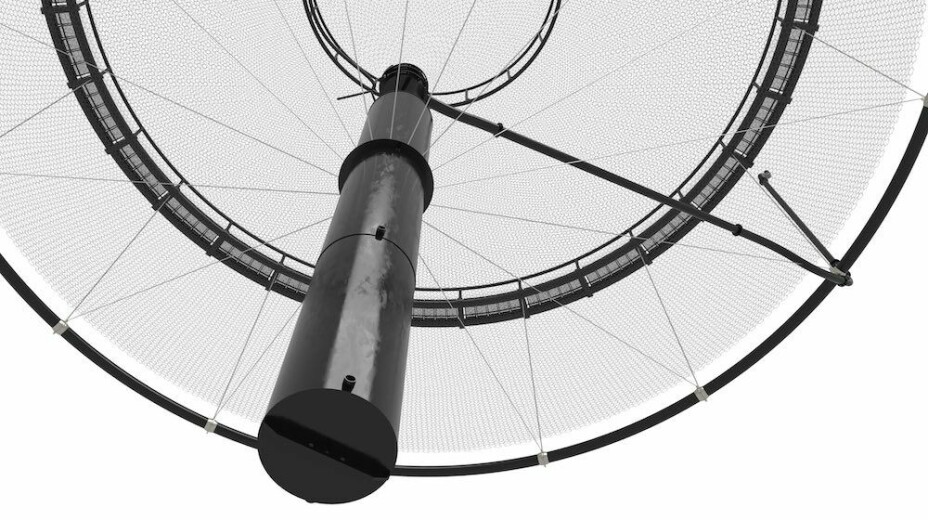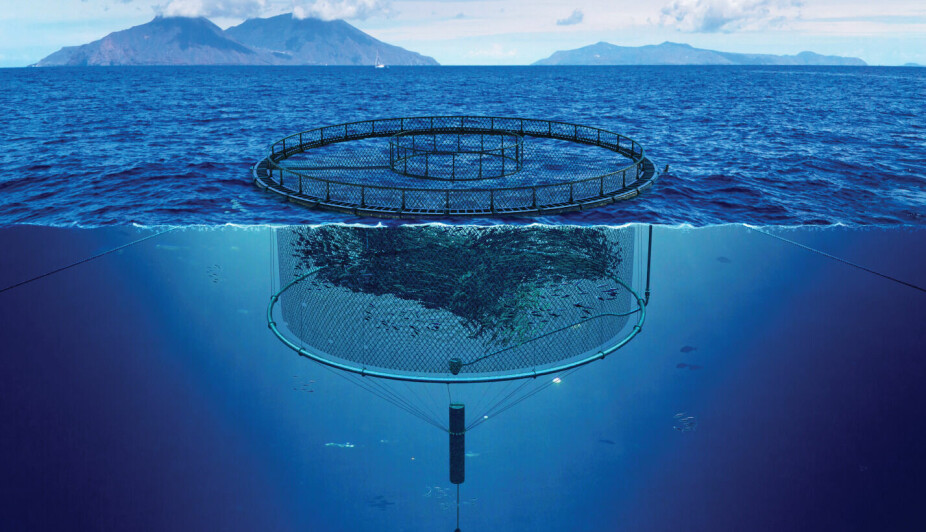
Submersible salmonid pen in the pipeline from Innovasea
US-based aquaculture supplier is working on an air dome for new ‘duck and cover’ cage
American aquaculture supplier Innovasea is developing a salmon-friendly version of its recently launched SeaProtean submersible pen, senior vice president Langley Gace has told Fish Farming Expert.
Boston-based Innovasea introduced the pen at the end of August as a more affordable alternative to its heavy duty SeaStation and SeaVolution pens.
The SeaProtean is designed to be easily submerged ahead of a hurricane or storm, or to protect fish stocks from warm surface water temperatures or harmful algal blooms.

Swim bladders
But submerging a pen containing salmon removes the access to air that the fish require to fill their swim bladders, and that’s a problem Innovasea is tackling.
“We are working on a version for a customer who wants to do salmonids, so we are working on an air dome,” explains Gace.
“We’ve been working on it for quite some time, we are interfacing with scientists who have done peer reviewed work on it to get some of the metrics down.
“There is a huge market for it, and ultimately the model with an air dome will come. We will release that to that client and learn a lot with them. On paper, it’s good to go.”
Other species
In the meantime, Innovasea is hoping that its SeaProtean pen will sell to farmers of other fish species in regions such as the Mediterranean, Middle East, and Central America.
The company describes the SeaProtean as a rugged but lightweight pen that features what it claims to be industry’s smoothest buoyancy control system to alleviate fish stress and simplify operation.

The pen is lowered by allowing sea water to push air out of three vertically stacked buoyancy chambers suspended beneath the net. Each chamber is filled with water by opening a valve at the top of a hose that is connected to the chamber at one end and to a buoy at the surface at the other end. This can, in theory, be done by just one person in a boat, although Gace points out that safe practice means there are always likely to be at least two people on a vessel.
The pen is raised in stages from a boat by attaching a hose to an air compressor to push water out of one chamber at a time. The process enables fish farmers to raise the pen in three stages and choose how much time to leave between each stage to allow their fish to acclimate.
Atlantic cod
“If you have a fish that’s very sensitive to depth, like Atlantic cod, you have to bring those up to the surface over many hours,” says Gace.
“So, you fill that bottom third (the bottom chamber) and then the pen comes up and stops at a certain station below the water surface. Even if the operator keeps adding more air in error, the air just burps out of the bottom and the volume of air doesn’t change because it’s a rigid cylinder. It’s not like a balloon that can expand.
“Then, you wait a few hours or minutes, depending on how sensitive the fish are, and when their air bladders have stabilised, they can then go to the next level. So, you fill the next chamber, and finally the last one to the surface.”

'Black eyes and bloody noses'
Innovasea has been developing and producing its SeaStation submersible pens to 26 years and chose to use three buoyancy chambers because that’s what it uses on the open ocean pen, which houses the chambers in a central spar that supports the top and bottom nets.
“All the black eyes and bloody noses on how to deal with three (buoyancy chambers) and the umbilical (the hoses), we dealt with that in the late Nineties,” says Gace.
Another advantage of the new pen is that it uses a submerged grid system, adds the executive.
“When you see other submersible pens in the submerged position, they are hanging from bridles that are connected to buoys that are at the surface. The problem with the buoys at the surface is they go up and down and directly translate that energy down,” he explains.
“Our experience resulted in a completely submerged grid system and pen system. As a swimmer at the beach, it can be very choppy at the surface but if you dive down a metre of two if can be very calm. That’s the fundamental ocean engineering philosophy that we use.”
Easy to submerge
Gace stresses that while the pen offers more options than a standard net pen, “it is not meant for 2-3 metre waves every day, all the time. That’s what the SeaStation is for.
“The SeaProtean pen is meant for duck and cover, where [most of the time] it’s relatively calm, you farm it like a traditional pen, you’ve got a walkway around the side, but if you need to sink it you can do it very easily.
“If you never need to sink a pen, it’s not the right pen for you.”
Designed to be affordable
The submersible pen will be more expensive than a standard net pen but “it’s a few percentage points more, not two X, three X times”, he says, pointing out that the pen was designed to be affordable.
“The bulk of the pen is HDPE pipe, and there’s no reason for us to ship that across tax borders or oceans. That’s sourced locally to our specifications, and we’ve got approved vendors in various regions,” he says.
“It’s also modular. Ninety per cent or more of the parts used are the same for all sizes, it’s just a case of changing how much HDPE pipe you use and the depth of the net. We’ve really focused on design for manufacturability, i.e., high volume, high quality, lower cost."
























































